There are many glass configurations available with Cardinal Glass. Your windows are going to last forever so we want to be sure they are built for your needs and comfort for years to come. Cardinal provides a Comfort Calculator if you want to get technical.
Our standard Prime Window glass build includes – Double Pane, LoE270, Argon Gas and Preserve Protective Film. From there we can upgrade the glass thickness for sound proofing, type of glass for safety and number of panes for energy efficiency. And of course many options for energy efficient glass coatings.
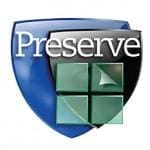
Cardinal Preserve Protective Film
GUARDS GLASS SURFACES THROUGH INSTALLATION – All our windows come with Cardinal Preserve Protective Film.
When you are done with a new or remodeled house, filthy or scratched windows can take the wind out of the homeowner’s sails. Post-construction cleanup is also an annoyance, as you spend time and money cleaning instead of moving on to the next job. Cardinal IG Company’s Preserve™ window film provides an end-to-end solution to dirty and marred windows. Pre-applied on Cardinal insulating glass (IG) units, Preserve film protects everybody’s interests, whether it be the window manufacturer, construction supplier or contractor. Most importantly, it protects your relationship with the homeowner, as they get perfect, clean windows every time. But spattered paint isn’t the only problem. There’s excess stucco. Slopped mud. Scratched glass. By the time construction is over, the windows are a mess. But if your windows are covered with Preserve, clean-up is a snap. So when the job is over, builders simply peel off Preserve and throw it away – along with all the grime, even the labels.
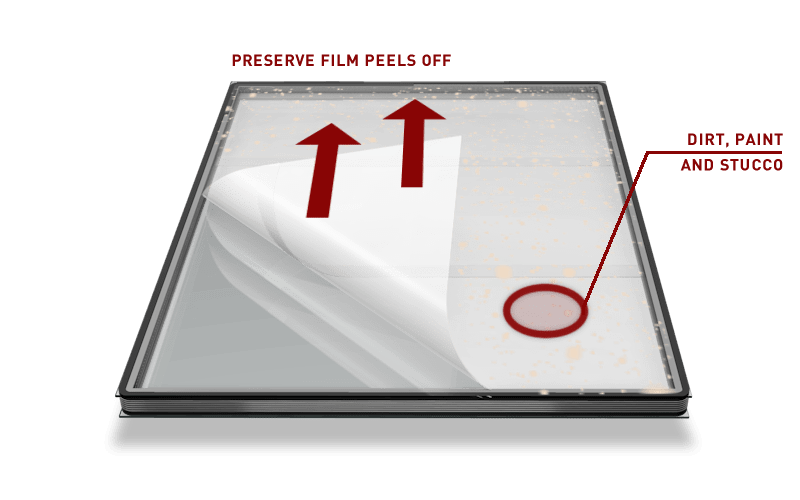
Sound Proofing
One of the most important upgrades to customers when they choose new windows is sound proofing. We can do this affordably by increasing the thickness of each pane in a double pane window. Triple Pane does not really offer any sound upgrade over double pane. The size and configuration of a window also controls what thickness of glass we can upgrade to. Most windows can go to STC 35 and sometimes STC 33 depending on the size. Laminated glass also offers soundproofing which can be very expensive per window. The chart below shows the thickness of each pane of glass. Standard for Prime is 1⁄8 – 1⁄8 which greatly reduces the sound over poorly made inefficient windows.
Virtual Sound Lab
Explaining acoustic engineering and sound control design theories to your clients can be a daunting task. Let us help simplify it for you through our Virtual Sound Lab. We’ve created an algorithm that allows your clients to “hear” the sound control they can expect at various performance levels. Try it out for yourself.
Types oF Glass
Most windows come with Annealed Glass. Tempered Glass or Safety Glass is usually used in entrance glass, doors, patio doors, over the tub glass and anywhere else safety is an issue. Tempered Glass is also harder to break than Annealed Glass. Laminated Glass can be used for security as it is very hard to break through with a plastic vinyl interlayer. Laminated is also an one of the options when it comes to a sound proofing upgrade.
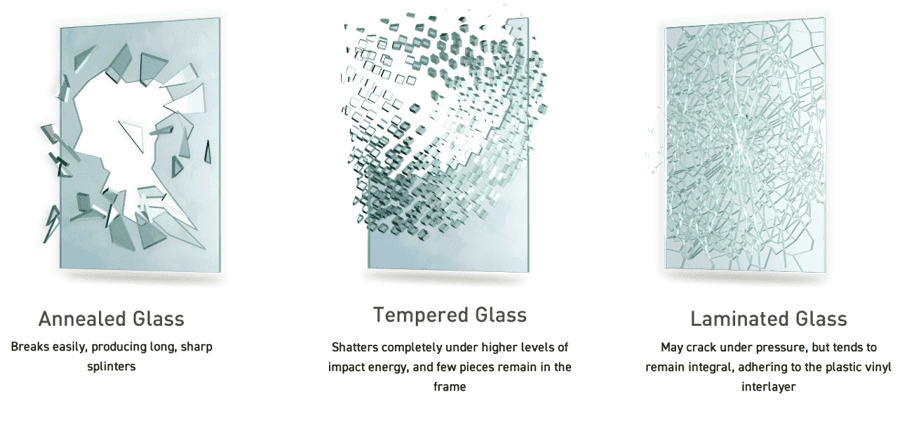

Cardinal Laminated Glass
GLASS FOR SECURITY AND SAFETY! Life can be unpredictable. Everyone is concerned about the safety of homes and families. Unforeseen weather can cause havoc for homeowners. Today’s auto and air traffic mean that the world is an increasingly noisy place. So taking practical steps to protect your interests is smart. Laminated glass products from Cardinal LG Company can help, offering a level of security and serenity that can’t be realized with ordinary glass.
Ordinary annealed glass breaks easily. Tempered glass, while stronger, shatters under a greater impact. But laminated glass is different. If laminated glass is broken, the vinyl interlayer remains in the frame, with glass fragments adhering to the interlayer. This provides a strong barrier against forced entry and cannot be cut from one side only, which renders glasscutters useless. Cardinal’s laminated glass meets rigorous industry codes, including the American Society of Testing Materials standard for preventing forced entry (ASTM F1233) and the burglary resistant guidelines issued by Underwriters Laboratories (UL972). Our laminated glass is customized to meet the requirements of any security application, providing the best options available.
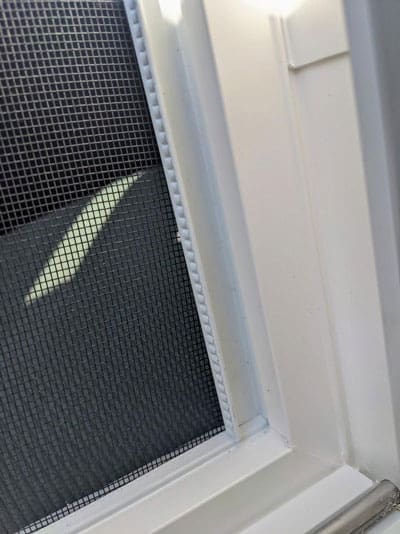
Prime Quality Screens
We have two types of window screens for sliders.
The standard screen has pull tabs which are used to remove the screen.
Optional is a Tab-less Screen. Tab-less Screens are available in white windows only and uses an aluminum pull rail to place your finger tips in to remove the screen. Pictured on the left.
Casement and Awning screens are standard and are very unique in that the screen is linked to the window frame with no trap door to open to access the crank like most windows.
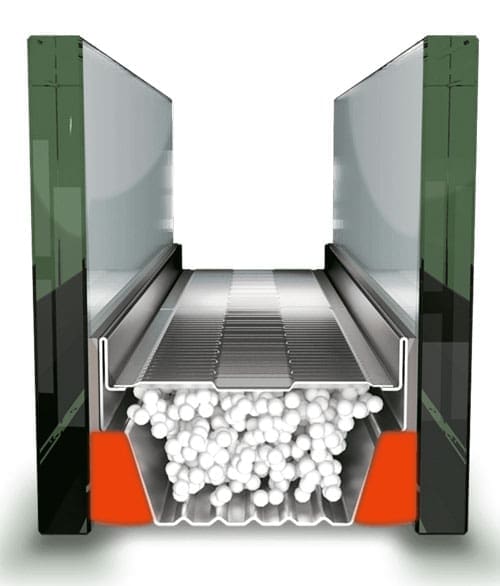
Double Pane Glass
Double pane glass is standard in our configuration and offer perfect energy efficiency for our rain forest climate. We also recommend Double pane for additional sound proofing options.

Triple Pane Glass
Triple pane glass is worth the additional cost if you plan on living in your house for anywhere from fifteen to twenty-five more years. That’s how long the cost of the third pane will take to give you energy savings that equal their cost. Or if you just hate anything remotely close to a cold room in the winter, go for the triple pane window as extra insurance against the cold. The thing is, triple pane windows with their three panes of glass, do a better job than double pane windows on preserving energy within your home. But the third pane doesn’t really make that dramatic of a difference. In other words our double pane windows will be an incredible upgrade over the older aluminum frame windows.
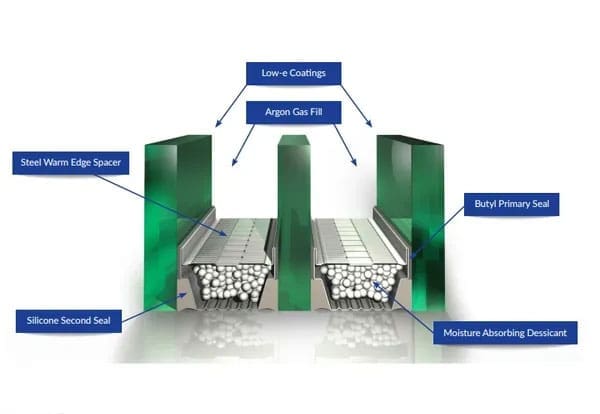
Argon Gas
Since 1988, Cardinal IG Company has been gas filling their IG units. Gas filling, and more particularly argon gas filling, is used to lower the U-Factor of the IG unit.
Inert gases; i.e., argon and krypton, have been used in insulating glass (IG) units to enhance the thermal performance of the IG unit and window by reducing the U-Factor. Argon and krypton are colorless, odorless, non-toxic, noncorrosive, nonflammable, chemically inactive gases and are parts of the atmosphere. Argon is approximately 1% of the atmosphere and krypton is approximately 0.000001% or 1 part per million of the atmosphere.
Improved Thermal Conductivity
The principal reason for using argon or krypton in the airspace of an IG unit is because the thermal conductivity of these inert gases is significantly lower than that of air. This lowers the conductive heat transfer across the cavity of the IG unit, improving the center of glass U-Factor and overall window U-Factor. The lower conductance of these gases is due to the fact that their molecular mass is greater than that of air. With a larger mass, these inert gases move slower than air, and there are fewer molecular collisions per unit of time. Fewer collisions result in less heat transfer.
Argon vs Krypton
Because of its large natural abundance, argon is inexpensive compared to krypton. Krypton is approximately 600 times the price of argon and fluctuates significantly with market conditions. That is the main reason why krypton is used sparingly compared to argon. Since argon and krypton gases are inert and very pure in commercial grades, there is no concern over chemical reactions with other materials used in an insulating glass unit or window.
In 1988, Cardinal developed and patented a state-of-the-art process for argon filling of insulating glass units. Recognizing the need to determine the specific argon fill levels in IG units, Cardinal has also installed online argon measuring equipment using Spark Emission Spectroscopy (SES) or Tunable Diode Laser absorption spectroscopy on all our production lines.

